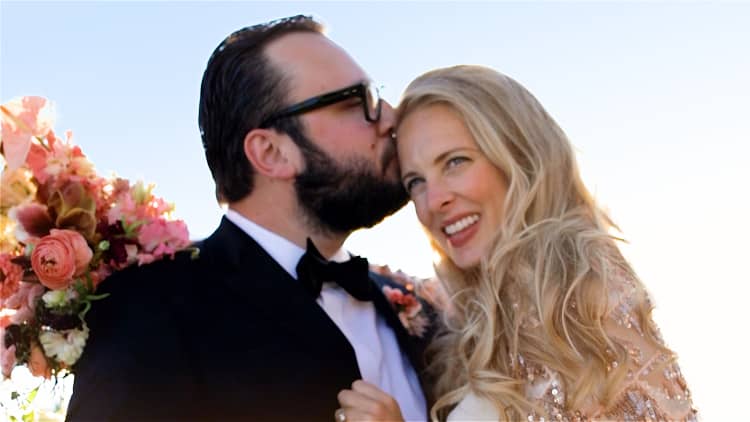Peter Dazeley | The Image Bank | Getty Images
The price of getting married has ballooned amid sticky inflation, and some couples are footing the bill with personal loans — which may be a costly mistake, experts say.
Driven by inflation, the average cost of a ceremony and reception was $30,000 in 2022, up from $28,000 the previous year, according to wedding website The Knot.
Meanwhile, personal loans have become more expensive following interest rate hikes from the Federal Reserve. The average personal loan rate was 11.29%, as of Aug. 16, compared to 10.28% in early 2022, Bankrate reported.
However, some couples may want to reconsider borrowing money to finance the big day.
“What you’re really doing is setting yourself up for a box of macaroni-and-cheese marriage,” said Mark Hamrick, senior economic analyst at Bankrate.
More from Personal Finance:
Here’s how much people really tip post-pandemic
Here are 3 things to know about retirement benefits
Why you should plan for volatility, even with a ‘soft landing’ for the economy
Personal loans typically have a fixed interest rate that, depending on the borrower’s credit profile and income, can be cheaper than higher interest credit cards. But experts say it’s still a costly way to borrow.
Nuptial loans a ‘hard place to start a relationship’
“I am wholeheartedly against any couple pulling out a loan for a wedding,” said Los Angeles-based wedding expert and planner Jason Rhee. “I think that is such a hard place to start in your relationship with your partner.”
Parents and in-laws can pool funds to help cover the wedding but more couples, like Janet and Brian Counts from Front Royal, Virginia, are paying for the wedding themselves nowadays.
“We were paying for it ourselves and I really did not want to go into debt for a wedding,” Janet Counts previously told CNBC.

There are many ways a couple can have their special day without a new loan or “pulling out a second mortgage,” added Rhee.
Being transparent with your partner and whoever else is helping you fund or plan the wedding will avoid adding more stressors to an already high stakes process, he said.
Here are a few things to consider when paying for your wedding:
1. Vendors may offer payment plans
Most vendors have their own payment structures, said Rhee. You should ask about payment plans during the hiring process and take each vendor’s agreement into consideration.
For instance, Janet Counts financed her wedding last year on payment plans.
While it’s difficult to manage payment plans for 10 different vendors, you can organize them by due dates in a spreadsheet, suggested Counts.
“They all pretty much required to be paid before the day of the wedding and that was really helpful,” she said. “Even if we put it on a credit card, it was nice not to have to do any payment conversations on the wedding day.”
2. Credit card rewards may be useful
Some credit cards offer rewards a couple can later use for their honeymoons. However, before you pull out your card and start swiping, ask about your vendors’ preferred payment method. Most do not accept credit cards, and if they do, they will add a percentage charge to the bill, added Rhee.
Keira01 | Istock | Getty Images
“If the points are very important to you, look how much the charge is to use a credit card versus the actual reward that you’re getting,” he said.
But you may be stuck with high interest debt if you can’t pay off the balance immediately. The average credit card interest rate is currently above 24%, as of Aug. 14, the highest since 2019, according to LendingTree.
3. Leverage higher savings rates
If your wedding date is farther out on the calendar, consider savings options to help your money grow faster, such as high-yield savings accounts or money market funds.
The top 1% of savings accounts had an average 4.71% rate, as of Aug. 21, according to DepositAccounts.com, while some of the biggest money market funds were paying north of 5%, according to Crane Data.

